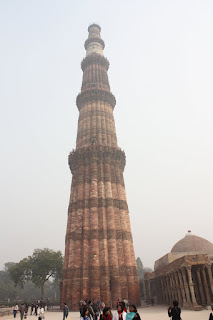Ride a Rickshaw in Kolkata!
Click the play button (lower left) for a ride in a motorized rickshaw down the streets of Kolkata. Ed, a Fulbright-Nehru scholar and friend in Kolkata, shot this on his way to Presidency College, where he is teaching. He takes this ride twice a day.
The video doesn't do justice to the thrill of it all. Turn up the volume to hear the sounds of Kolkata. Notice Ed's iron grip on the rail!
Ed has a much wordier blog than mine and you should visit it when you have a chance: http://edoshea.wordpress.com


















































